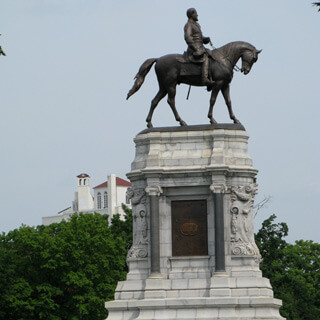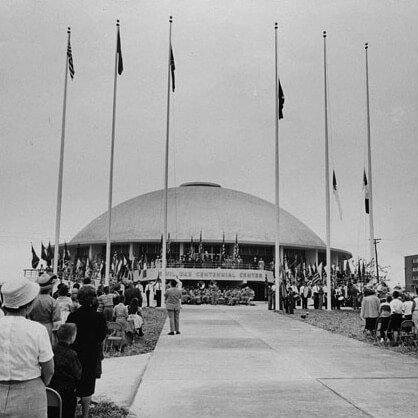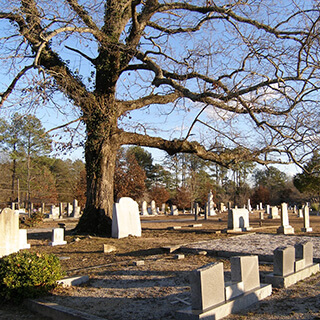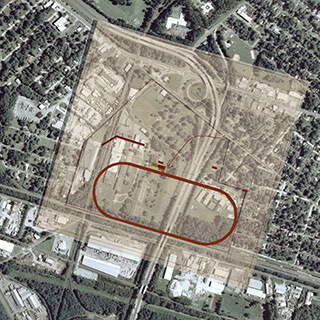Overview
In this illustrated lecture, Kirk Savage addresses how monuments "bearing the impress of white supremacy" participate in historical erasure. What happens when societies decide that memorialized landscapes and objects are outmoded or offensive? How to determine which monuments necessitate removal? Acknowledging no easy solutions, Savage clarifies what is at stake when citizens call for revisions to the memorial scene. In accompanying videos, political scientist Andra Gillespie and Daniel A. Pollock respond to Savage's lecture and explore how structural problems, racial politics, and notions of freedom influence memorialization.
Presentation
Responses
About the Speakers
Kirk Savage is a professor of art history and architecture at the University of Pittsburgh. He has written extensively on public monuments within the theoretical context of collective memory and identity. He is the author of Monument Wars: Washington, D.C., the National Mall, and the Transformation of the Memorial Landscape (Berkeley: University of California Press, 2009) and Standing Soldiers, Kneeling Slaves: Race, War, and Monument in Nineteenth-Century America (Princeton, NJ: Princeton University Press, 1997).
Andra Gillespie is an associate professor of political science at Emory University. Gillespie, who studies racial and ethnic politics in the United States, is the author of The New Black Politician: Cory Booker, Newark, and Post-Racial America (New York: New York University Press, 2012).
Daniel A. Pollock, a longtime resident of Atlanta, is author of the project "The Battle of Atlanta: History and Remembrance."
Cover Image Attribution:
Lee Removal, New Orleans, Louisiana, May 19, 2017. Photograph by Abdazizar. Courtesy of Wikimedia Commons. Creative Commons License CC BS-SA 4.0Recommended Resources
Text
Cox, Karen L. Dixie's Daughters: The United Daughters of the Confederacy and the Preservation of Confederate Culture. Gainesville: University Press of Florida, 2003.
Dupré, Judith. Monuments: America's History in Art and Memory. New York: Random House, 2007.
Fender, Stephen. The Great American Speech: Words and Monuments. Chicago: University of Chicago Press, 2015.
Loewen, James W. Lies Across America: What Our Historic Sites Get Wrong. New York: The New Press, 1999.
Savage, Kirk. Standing Soldiers, Kneeling Slaves: Race, War, and Monument in Nineteenth-Century America. Princeton, NJ: Princeton University Press, 1997.
Wilson, Charles Reagan. Baptized in Blood: The Religion of the Lost Cause, 1865–1920. Athens: University of Georgia Press, 2009.
Web
"Confederate Monument Interpretation Guide." Atlanta History Center. 2017. http://www.atlantahistorycenter.com/research/confederate-monuments/confederate-monument-interpretation-template.
Kahn, Andrew. "The Landscape of Civil War Commemoration." Slate, July 2, 2015. http://www.slate.com/articles/news_and_politics/history/2015/07/civil_war_historical_markers_a_map_of_confederate_monuments_and_union_ones.html.
Loewen, James W. "Why do people believe myths about the Confederacy? Because our textbooks and monuments are wrong." The Washington Post, July 1, 2015. https://www.washingtonpost.com/posteverything/wp/2015/07/01/why-do-people-believe-myths-about-the-confederacy-because-our-textbooks-and-monuments-are-wrong/?utm_term=.899d2bd10626.
"Whose Heritage? Public Symbols of the Confederacy." Southern Poverty Law Center, April 21, 2016. https://www.splcenter.org/20160421/whose-heritage-public-symbols-confederacy.
Wiggins, David N. "Confederate Monuments." New Georgia Encyclopedia, last modified August 17, 2017. http://www.georgiaencyclopedia.org/articles/history-archaeology/confederate-monuments.




